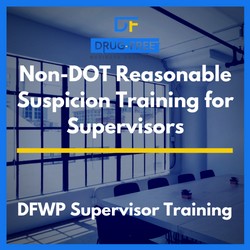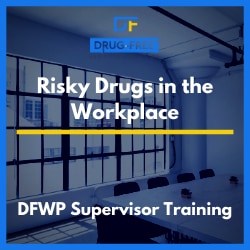You have determined reasonable suspicion. Now what do you do? This course provides supervisors with a step-by-step approach for initiating and following through with reasonable suspicion drug testing. Here is the four-step process we teach in our Non-DOT Reasonable Suspicion Training for Supervisors:
Remove Suspected Employee From Job
After determining reasonable suspicion for drug testing, the first step is to remove the suspected employee from duty.
It is important that you initiate the reasonable suspicion drug testing process promptly.
Confront Employee with Your Documented Evidence of Drug and/or Alcohol Use
After removing the employee under inquiry from duty, you must confront that employee with well-documented evidence of use.
In your evidence, you should explain all of the observations that garner your suspicions, and you should make it clear that they must either take the drug test or face potential grave consequences – consequences involving losing their job.
Employers, especially those with a drug-free workplace policy, cannot tolerate drug and alcohol use on the job.
Test Employee for Reasonable Suspicion if Warranted, without Delay
By now, you should have solid documentation of the observed evidence, and you can administer the drug test. Do not drag your feet. Give the employee the drug test immediately.
Remember, you want the drug test to accurately reflect the drug and alcohol levels that correspond to your observations. The longer you wait, the less of an accurate reflection the drug test provides.
Time is of the essence in reasonable suspicion drug testing. It is not a week-long process or even a day-long process. It should happen swiftly and concisely.
Act on Test Results in Accordance with Employer Drug and Alcohol Policy
The final step is to act on the drug and alcohol test results.
Your employer drug and alcohol policy will dictate how you are to react, who you must be in contact with, and the channels you must use to communicate with fellow employees about the drug test results.
Confidentiality is important in this step of the drug testing process. You should only be discussing results with a select group of people, determined in your employer’s drug and alcohol policy.
And you should only be using certain communication lines.
Courses Related






